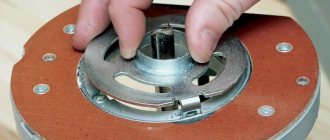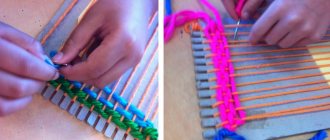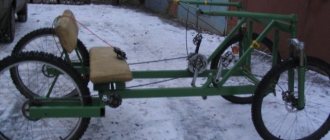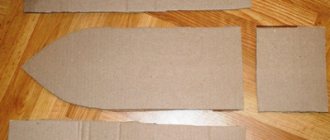A drilling machine for printed circuit boards belongs to the category of mini-equipment for special purposes. If desired, you can make such a machine yourself using available components. Any specialist will confirm that it is difficult to do without the use of such a device in the production of electrical products, the circuit elements of which are mounted on special printed circuit boards.
Simple mini PCB machine
General information about drilling machines
Any drilling machine is necessary in order to ensure the ability to efficiently and accurately process parts made from various materials. Where high precision processing is required (and this also applies to the process of drilling holes), manual labor must be eliminated as much as possible from the technological process. Similar problems are solved by any drilling machine, including homemade ones. It is practically impossible to do without machine equipment when processing hard materials, for drilling holes in which the efforts of the operator himself may not be enough.
Design of a benchtop belt driven drill press (click to enlarge)
Any drilling machine is a structure assembled from many components that are securely and accurately fixed relative to each other on a supporting element. Some of these nodes are rigidly fixed to the supporting structure, and some can move and be fixed in one or more spatial positions.
An example of motors used in the manufacture of a homemade mini drilling machine
The basic functions of any drilling machine, through which the processing process is ensured, is the rotation and movement in the vertical direction of the cutting tool - the drill. On many modern models of such machines, the working head with the cutting tool can also move in a horizontal plane, which allows this equipment to be used for drilling several holes without moving the part. In addition, automation systems are being actively introduced into modern drilling machines, which significantly increases their productivity and improves processing accuracy.
Below, as an example, are presented several design options for homemade drilling machines for circuit boards. Any of these diagrams can serve as a model for your machine.
Making a ratchet from an old hand drill
The range of tool capabilities does not end there. You can also make a convenient ratchet wrench from an old and unnecessary hand drill. Moreover, it can be used as a regular wrench, that is, tightened by hand, or in tandem with a screwdriver.
To make the tool, you will need two bevel gears and a drill shaft, as well as steel tubes, plates and a welding machine. The process of making the tool is shown in detail in the video material. The result is a universal hand tool that is definitely stronger than modern ratchet wrenches.
As you can see, a hand drill is a very interesting tool from which you can make various homemade products, expanding your capabilities and also simplifying your work. If you come up with something else that can be done with a hand drill, be sure to share it, as it will help people use an outdated tool to do new things.
Features of equipment for drilling holes in printed circuit boards
A machine for drilling printed circuit boards is one of the types of drilling equipment, which, given the very small size of the parts processed on it, belongs to the category of mini-devices.
Any radio amateur knows that a printed circuit board is the base on which the components of an electronic or electrical circuit are mounted. Such boards are made from sheet dielectric materials, and their dimensions directly depend on how many circuit elements need to be placed on them. Any printed circuit board, regardless of its size, simultaneously solves two problems: accurate and reliable positioning of circuit elements relative to each other and ensuring the passage of electrical signals between such elements.
Depending on the purpose and characteristics of the device for which the printed circuit board is created, it can accommodate either a small or a huge number of circuit elements. To fix each of them in the board, you need to drill holes. Very high demands are placed on the accuracy of the location of such holes relative to each other, since it is this factor that determines whether the elements of the circuit will be positioned correctly and whether it will be able to work at all after assembly.
Drilling holes in foil getinaks on a homemade machine
The difficulty of processing printed circuit boards also lies in the fact that the majority of modern electronic components are miniature in size, therefore the holes for their placement must have a small diameter. To form such holes, a miniature tool (in some cases even micro) is used. It is clear that it is not possible to work with such a tool using a conventional drill.
All of the above factors led to the creation of special machines for forming holes in printed circuit boards. These devices have a simple design, but can significantly increase the productivity of this process, as well as achieve high processing accuracy. Using a mini-drilling machine, which is easy to make with your own hands, you can quickly and accurately drill holes in printed circuit boards intended for assembling various electronic and electrical products.
Drilling machine from an old microscope
What else can be made from an old hand drill - a quick-driver
The above describes the process of making a homemade product from an old two-speed drill, which has 4 gears. However, there are also single-speed devices that can also be used to make homemade products. This type of tool can be used to make a screwdriver that can be operated with one hand. This is very convenient when the other hand is busy. This device is called a quick-twist, and the principle of its manufacture is as follows:
- Take an old clamp or weld a U-shaped frame on which the homemade components will be located
- On one side, weld a fixed handle, as well as a movable trigger (made of steel with a thickness of at least 1.5 mm), which is connected to ¼-1/5 of the bevel gear from the tool
- On the other side of the U-shaped frame, a shaft is attached, on which a cartridge and a bevel gear are fixed, connected to the half-gear from the trigger
- When you press the handle, the cartridge moves due to the transmission of torque
- A bit of the appropriate type is fixed into the chuck, after which you can start working
This homemade product has one drawback - it is necessary to disconnect the bit from the fastening element in order to return the handle to its original position. An example of such an invention is shown in the photo below.
How does a machine for drilling holes in printed circuit boards work?
The machine for forming holes in printed circuit boards differs from classic drilling equipment in its miniature size and some features of its design. The dimensions of such machines (including homemade ones, if the components for their manufacture are correctly selected and their design is optimized) rarely exceed 30 cm. Naturally, their weight is insignificant - up to 5 kg.
Design of a homemade drilling machine
If you are going to make a mini drilling machine with your own hands, you need to select the following components:
- supporting frame;
- stabilizing frame;
- a bar that will ensure movement of the working head;
- shock absorbing device;
- handle for controlling the movement of the working head;
- device for mounting an electric motor;
- the electric motor itself;
- power unit;
- collet and adapters.
Drawings of machine parts (click to enlarge)
Machine console drawing
Let's figure out what all these components are for and how to assemble a homemade mini-machine from them.
Structural elements of a mini drilling machine
Do-it-yourself mini-drilling machines can differ significantly from each other: it all depends on what components and materials were used for their manufacture. However, both factory-made and home-made models of such equipment work on the same principle and are designed to perform similar functions.
It will be easier to make the machine if you take a slide from a computer drive for the drilling head
The supporting element of the design of a drilling machine for printed circuit boards is the base frame, which also ensures the stability of the equipment during the drilling process. Based on the purpose of this structural element, it is advisable to make the frame from a metal frame, the weight of which should significantly exceed the total mass of all other equipment components. If you neglect this requirement, you will not be able to ensure the stability of your homemade machine, which means you will not achieve the required drilling accuracy.
The role of the element on which the drilling head is mounted is performed by a transitional stabilizing frame. It is best made from a metal strip or corners.
Drive carriage with attached homemade corner for the engine
The bar and shock-absorbing device are designed to ensure vertical movement of the drilling head and its spring-loading. Any structure can be used as such a bar (it is better to fix it with a shock absorber) (the only important thing is that it performs the functions assigned to it). In this case, a powerful hydraulic shock absorber can come in handy. If you don’t have such a shock absorber, you can make the bar yourself or use spring structures removed from old office furniture.
The vertical movement of the drilling head is controlled using a special handle, one end of which is connected to the body of the mini-drilling machine, its shock absorber or stabilizing frame.
Lever attachment
The engine mount is mounted on a stabilizing frame. The design of such a device, which can be a wooden block, a clamp, etc., will depend on the configuration and design features of the remaining components of the drilling machine for printed circuit boards. The use of such a mount is determined not only by the need for its reliable fixation, but also by the fact that you must bring the electric motor shaft to the required distance from the movement bar.
Choosing an electric motor that can be equipped with a mini-drilling machine that you assemble yourself should not cause any problems. As such a drive unit, you can use electric motors from a compact drill, cassette recorder, computer disk drive, printer and other devices that you no longer use.
Hair dryer motor
Depending on what kind of electric motor you found, clamping mechanisms for fixing drills are selected. The most convenient and versatile of these mechanisms are the chucks from a compact drill. If a suitable cartridge cannot be found, you can also use a collet mechanism. Select the parameters of the clamping device so that it can hold very small drills (or even micro-sized drills). To connect the clamping device to the motor shaft, it is necessary to use adapters, the dimensions and design of which will be determined by the type of electric motor selected.
Miniature collet chuck
Depending on which electric motor you installed on your mini-drilling machine, you need to select a power supply. When making this choice, you should pay attention to the fact that the characteristics of the power supply fully correspond to the voltage and current parameters for which the electric motor is designed.
Diagram of automatic speed control depending on the load for a 12 V engine (click to enlarge)
The procedure for assembling a homemade device
As practice shows, it is most convenient to assemble a homemade machine for drilling holes in printed circuit boards in a certain sequence. You must act in accordance with the following algorithm.
- The frame is installed, and legs are attached to its underside, if they are provided for in the design.
- A movement bar and a holder frame on which the drilling head will be mounted are attached to the assembled frame.
- The holder frame is connected to a shock absorber, which is also fixed to the equipment frame.
- A handle for controlling the movement of the drilling head is installed, connected to a shock absorber or holder frame.
- An electric motor is mounted, the position of which is carefully adjusted.
- A collet or a universal drill chuck is attached to the shaft of the drive motor using adapters.
- A power supply connected to the electric motor via electrical wires is being installed.
- A drill is installed in the chuck and securely fixed in it.
- The assembled homemade machine is tested by trying to drill a hole in a dielectric sheet with its help.
To ensure that your homemade mini-drilling machine can always be disassembled and modified, it is best to use bolts and nuts to connect its structural elements.
If you want to make your own mini-equipment for making holes in printed circuit boards, you can always use the drawings and advice of those who already own such a machine and are actively working on it in their home workshop.
Machine based on the steering rack of a passenger car
A steering rack for a car and a drill are quite massive products, so the frame should also be massive and, preferably, with the ability to attach the machine to a workbench. All elements are welded, since connections with bolts and screws may not be sufficient.
The frame and support post are welded from channels or other suitable rolled products, about 5 mm thick. The steering rack is secured to a stand, which should be 70–80 mm longer than the rack, through the eyes of the steering column.
To make the machine more convenient to use, the drill control is placed in a separate unit.
Assembly procedure for tabletop drilling machines:
- preparation of all elements;
- attaching the stand to the frame (check verticality!);
- assembly of the movement mechanism;
- fastening the mechanism to the rack;
- fastening the drill (check verticality!).
All fastenings must be made as securely as possible. It is advisable to join one-piece steel structures by welding. When using any kind of guides, you need to make sure that there is no lateral play during movement.
Advice! To fix the part in which the hole is drilled, the machine can be equipped with a vice.
You can also find ready-made stands for drills on sale. When purchasing, you need to pay attention to the weight of the structure and the size of the working surface. Lightweight (up to 3 kg) and inexpensive (up to 1.5 thousand rubles) racks are suitable for making holes in a thin plywood sheet.











